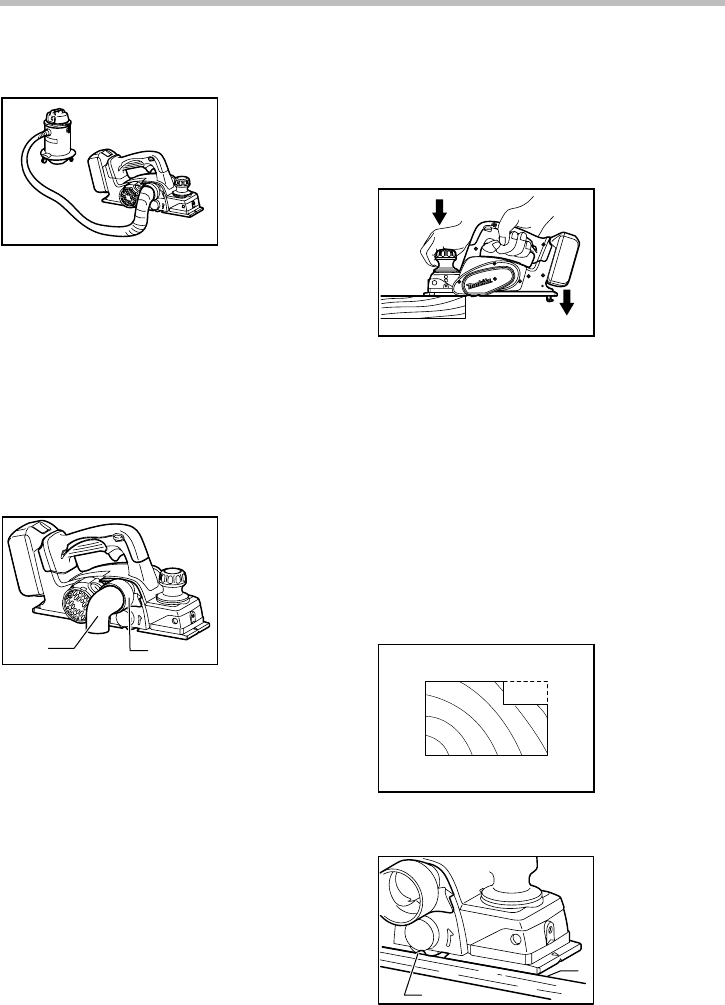
9
Connecting a vacuum cleaner
011757
For tool without nozzle
When you wish to perform clean planing operation,
connect a Makita vacuum cleaner to your tool. Before
connecting the vacuum cleaner, remove the chip cover
from the tool. Then connect a hose of the vacuum
cleaner to the nozzle (optional accessory) as shown in
the figures.
For tool with nozzle
When you wish to perform clean planing operation,
connect a Makita vacuum cleaner to your tool. Then
connect a hose of the vacuum cleaner to the nozzle as
shown in the figures.
Elbow (optional accessory)
1
2
011758
Use of elbow allows change of chip discharge direction
to perform cleaner work.
For tool without nozzle
Remove the chip cover and install the nozzle (optional
accessory). Attach the elbow (optional accessory) on the
nozzle of the tool by just slipping on it. To remove it,
just pull it out.
For tool with nozzle
Attach the elbow (optional accessory) on the nozzle of
the tool by just slipping on it. To remove it, just pull it out.
OPERATION
Hold the tool firmly with one hand on the knob and the
other hand on the switch handle when performing the
tool.
Planing operation
1
2
011759
First, rest the tool front base flat upon the workpiece
surface without the blades making any contact. Switch
on and wait until the blades attain full speed. Then move
the tool gently forward. Apply pressure on the front of
tool at the start of planing, and at the back at the end of
planing. Planing will be easier if you incline the
workpiece in stationary fashion, so that you can plane
somewhat downhill.
The speed and depth of cut determine the kind of finish.
The power planer keeps cutting at a speed that will not
result in jamming by chips. For rough cutting, the depth
of cut can be increased, while for a good finish you
should reduce the depth of cut and advance the tool
more slowly.
Shiplapping (Rabbeting)
002580
To make a stepped cut as shown in the figure, use the
edge fence (guide rule) which is obtained as accessory.
1
2
011752
1. Blade edge
2. Cutting line
1. Start
2. End
1. Elbow
2. Nozzle


















